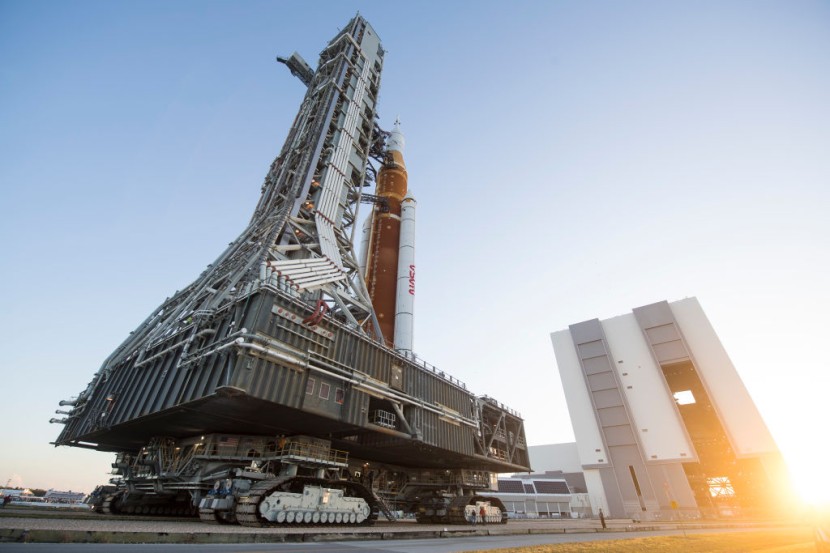
NASA's new giant moon rocket suffered pressurization issues that made technicians unable to safely load propellants into the craft, forcing authorities to delay the last major test of the Space Launch System (SLS) rocket.
The test is known as a "wet dress rehearsal" and has been pushed back to Monday, Apr. 4 at the earliest, the agency said in a post on the Artemis I live blog. NASA said that its teams opted to scrub tanking operations for the wet dress rehearsal because of the inability of technicians to pressurize the mobile launcher.
NASA's New Moon Rocket
The incident resulted in some fans on the mobile launcher, which was the platform that gives support for the rocket up until launch, being unable to maintain positive pressure. This was crucial in keeping away hazardous gases that could build up.
Authorities call the delayed test launch a "wet" rehearsal because the agency runs through all its procedures needed in the actual launch of the SLS. This includes the filling of the 322-foot rocket with 700,000 gallons of propellant, as per The Verge.
On Sunday evening, NASA had a press conference and said that its team was currently on the launchpad and trying to troubleshoot the issue. Authorities said that they were on track to resume the wet dress rehearsal tomorrow.
Furthermore, on Saturday afternoon, severe thunderstorms passed over the rocket's launch site, with four lightning bolts hitting protective towers around the rocket and the launcher. Officials had to pause preparation work at the launcher due to the weather. The agency later assessed that there was no damage and continued the countdown.
According to the New York Times, the launch director of the rocket, Charlie Blackwell-Thompson, said that the launcher's fan has been running since it was moved to the site last month. He noted that it continued to operate during the thunderstorm.
The deputy manager of the exploration ground systems program at NASA's Kennedy Space Center, Jeremy Parsons, tweeted that the fourth lightning strike on the launchpad was the "strongest we have seen since we installed the new lightning protection system."
Working Out the Problems
Each of the towers surrounding the pad is topped with a fiberglass mast and a series of overhead, or catenary, wires, and conductors. They help divert lightning strikes away from the rocket itself, said Parsons.
The new system also provided more protection than the one that officials used during the Shuttle program. Furthermore, it has an array of sensors that can determine the condition of the rocket after lightning strikes and could prevent delays that could be caused when teams need to assess the craft.
Blackwell-Thompson said that authorities did not believe that the fan issue was in any way related to the storm or the lightning event during the weekend. He said that the pad continued to run normally despite the weather phenomena and the morning after for several hours.
Parsons noted that the delay was part of the reason why they conducted the wet dress rehearsal, to figure out any problems that could be hiding in plain sight. He noted that since it was only a test launch, officials had enough time to work through the issues, CNN reported.
Related Article:
Argon Gas Trapped in Ice Core From Antarctica Found To Exist in Ancient Earth Atmosphere, Study Says
© 2025 HNGN, All rights reserved. Do not reproduce without permission.








